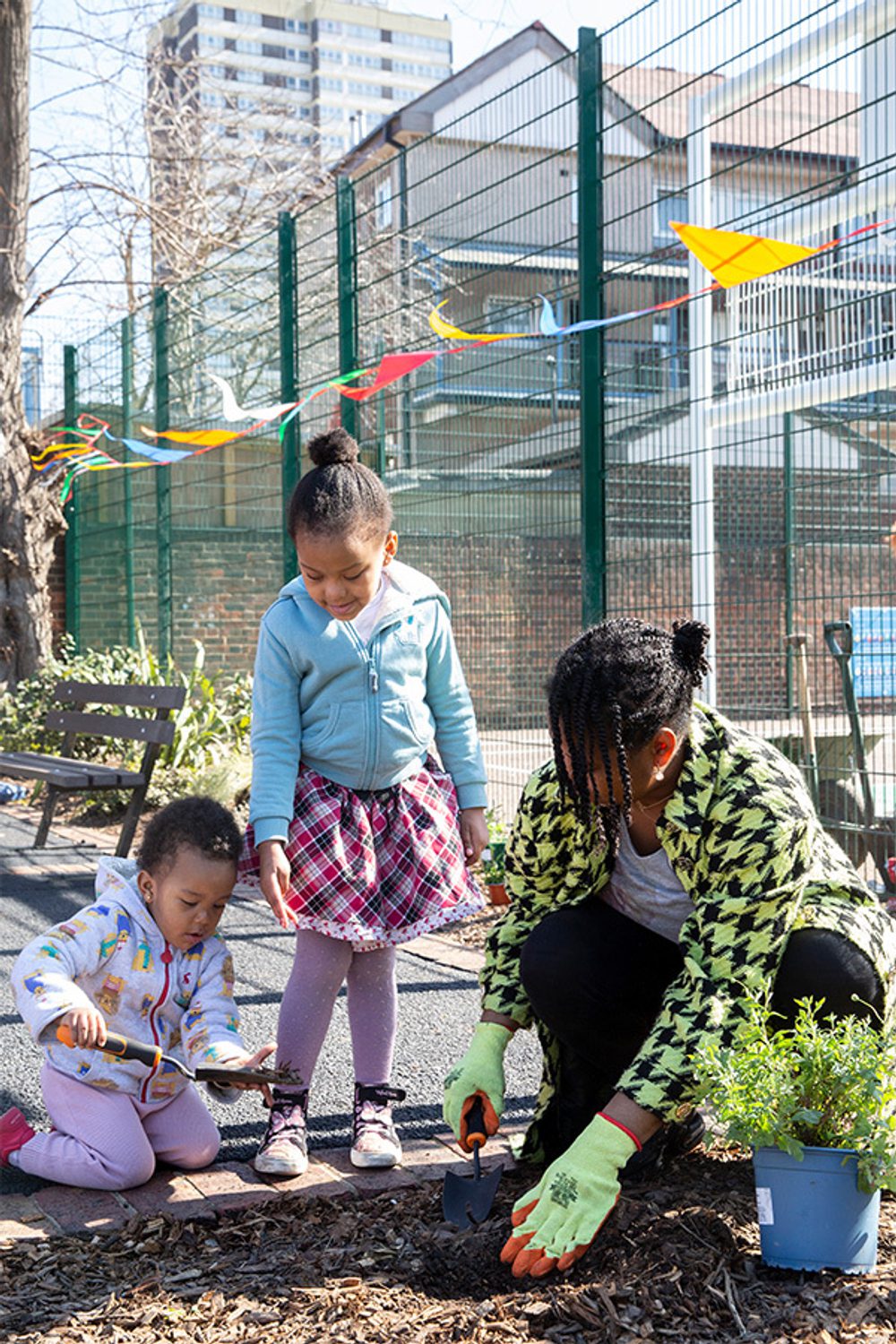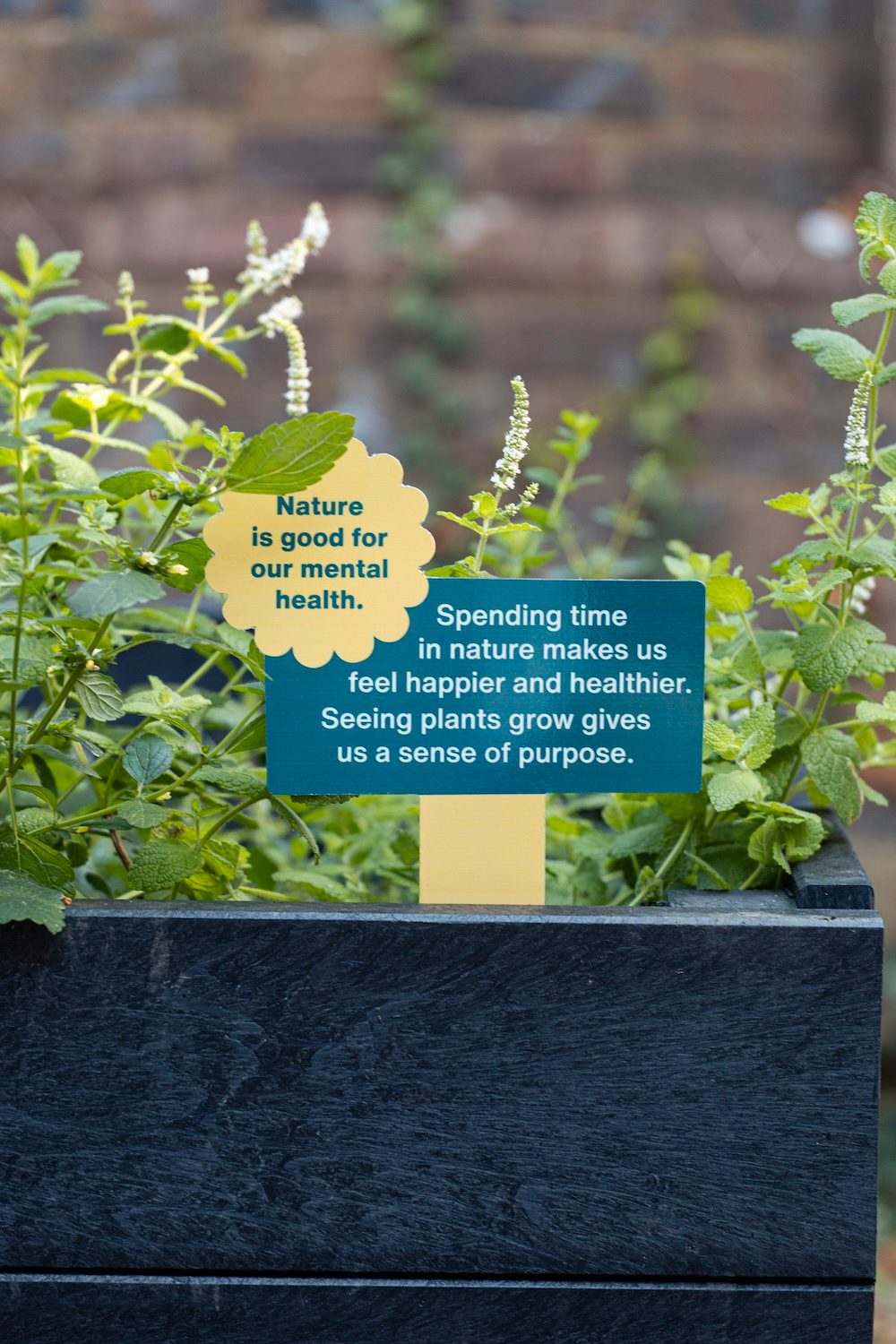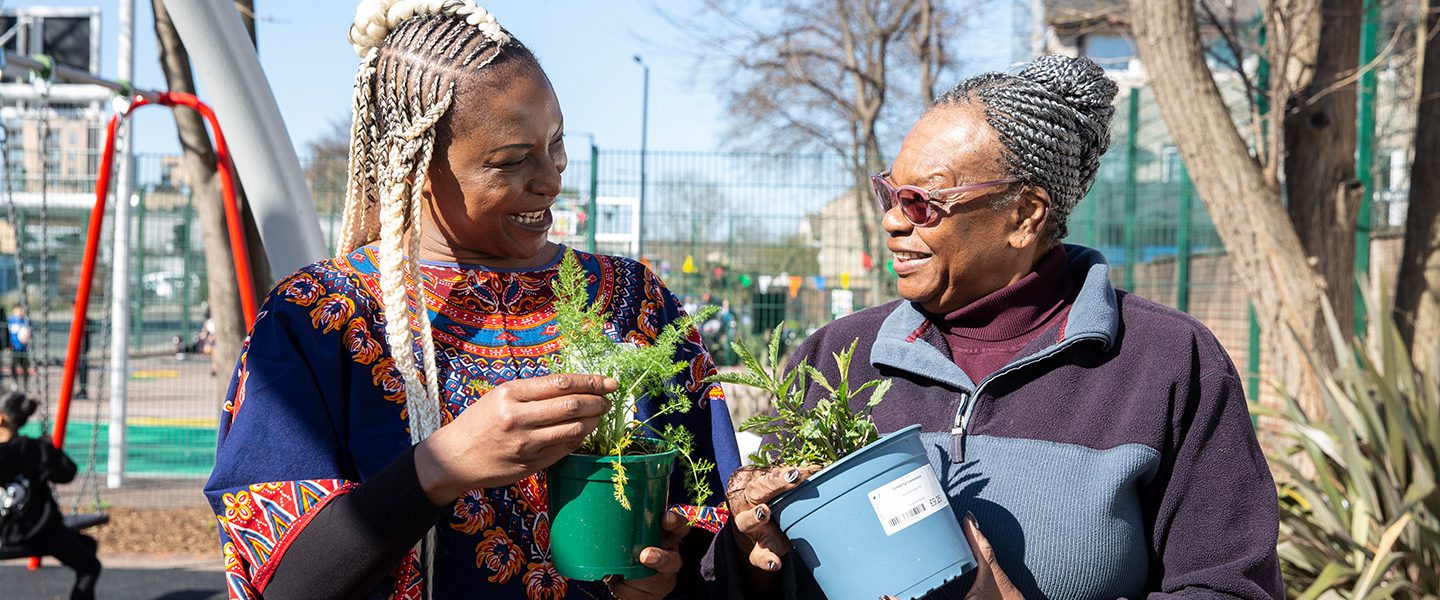Why the grass is greener in urban spaces
By Alex Robinson, 29th November 2023
From our vantage point in 2023, it feels strange that 'social' and 'environmental' issues have often been seen and tackled separately, when they’re so intertwined together. Take urban green space: how much is there, of what kind, and - crucially - where is it and who has access?
This has been a growing focus (pun intended) for Hubbub over the last few years, as we explore how access to nature and time spent in green spaces impacts people’s lives and communities. We've been testing the idea that community-led green spaces are a kind of multiplier: valuable for nature and biodiversity while offering all sorts of co-benefits, from health and wellbeing to community resilience. And of course, they’re places which can catalyse environmental action in new ways.
We'll be sharing more on this soon, but results from In Our Nature, our citywide climate campaign in Manchester, suggest that taking part in these greening projects is not only good in itself, it's also a powerful way for people to inspire one another, and for change to ripple through communities.
Don't just take our word for it. Our new video from Hubbub’s Breaking Ground project showcases the communities that have had the vision and drive to create real change in their neighbourhoods. As one of the residents behind Newham’s Park Village Oasis aptly put it, the project has "empowered people to have a voice in this community. Not just a voice about the green project and the climate agenda, but a voice about everything." Amen to that.
The reality is that those most affected by the climate crisis are often excluded from or underrepresented by the solutions. Breaking Ground is an attempt to keep decision-making power in local hands while finding a model that can drive change at scale. We've been supporting Breaking Ground projects around London with funding, mentorship, and guidance where it's needed. It's the same ethos that lies behind our other story today: the launch of a new toolkit to support the development of green spaces around healthcare settings, drawing on what we've learnt from the early phases of The Greener Communities Fund, in partnership with NHS Charities Together and made possible by the Starbucks 5p cup charge.
Back to the Breaking Ground video, and my favourite moment - one that I hope sums up our action-oriented approach: "Why doesn't somebody do something about it?", asks one of the participants, before answering her own question: "Well, somebody has done something about it!"
Meet the communities Breaking Ground
Throughout London, and in many other parts of the UK, people on lower incomes and people of colour are disproportionately affected by issues such as poor air quality, lack of access to green space, overheating and flash flooding. These communities are also often left out of environmental discussions and decision making.
So last year we launched Breaking Ground: a mentoring programme and grant fund to support community-led projects in the London boroughs of Camden, Ealing, Greenwich, and Newham. These projects bring social and environmental benefits to local neighbourhoods, designed and led by the people who live there.
Green spaces and nature can help our cities cope with floods and heatwaves, and spending time in nature has also been shown to improve mental and physical health. Breaking Ground has also shown that bringing neighbours together to transform an underused green space can be a powerful way to build resilience, strengthen communities and create positive change.
Next year, we're excited to bring Breaking Ground to Tower Hamlets. We want to replicate the success seen across the four projects and create a model that can be used to address environmental inequalities and barriers to participation in climate action in underserved and underrepresented communities.
Hear from the communities who drove change in their neighbourhood in our new impact video.

Your guide to urban greening projects
There’s no one-size-fits-all approach to creating green spaces. So how can we support new urban greening projects? Our new toolkit shares the learnings from our Greener Communities pilot projects to increase access to nature in healthcare settings.
The Greener Communities Fund has provided £1.2m of funding to NHS charities to create spaces in and around healthcare settings, increasing access to nature for NHS patients and staff and local community members.
Before the main fund, which selected ten projects, we supported four pilot projects across the UK. These projects showed how green spaces can improve health and wellbeing within different communities. The pilot projects helped enhance a nature walk at a Manchester mental health hospital, and brought greening activities to secure wards, created sheltered spaces for patients to access a meadow in Cardiff, and increased engagement with community gardens near GP surgeries in Glasgow and Greater London.
This toolkit brings together learnings from each of these projects, including guidance on how to green different spaces, run activities encouraging nature connectedness, work with hospitals and community volunteers, and measure and communicate impact. We hope it provides a range of organisations with helpful examples from the Greener Communities pilot projects in healthcare settings, and how this work can inform other urban greening projects.

Nature Hubs Fund
Starbucks and Hubbub have teamed up to give around 50 groups up to £6,000 of funding to make their communities greener and more connected to nature. Successful groups will work with their local Starbucks store to bring their ideas to life!
Want to stay in the loop?
Sign up to our newsletters to be the first to know about new campaigns, launches, tips, research and environmental news. You’re in for a treat.

